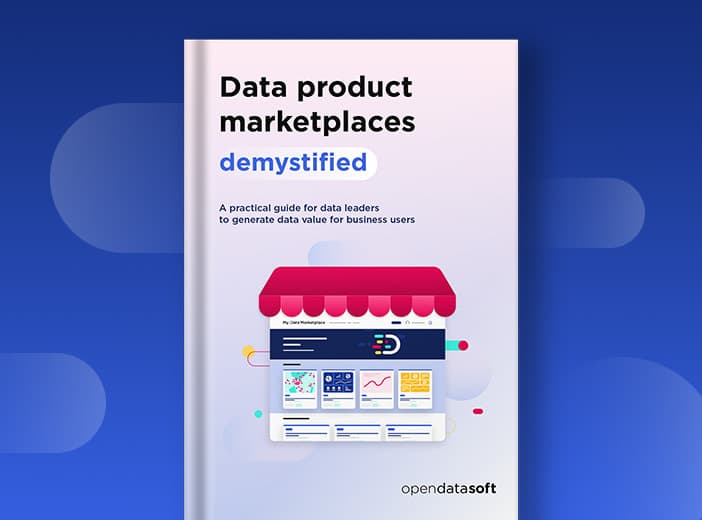10 KPIs to use to show the impact of your data marketplace
As with every technology program, organizations need to demonstrate that their data marketplace delivers return on investment, meets the needs of the business and supports overall corporate objectives. This blog explains 10 KPIs to measure to show impact and ROI.

To safeguard continued investment in your data marketplace, you need to ensure that it is delivering a clear, positive impact. It must meet its primary aim of turning data into value by increasing consumption across the organization, supporting greater efficiency, productivity, and innovation while underpinning collaboration and new revenues.
Demonstrating success is therefore essential. Based on Opendatasoft’s experience and the advanced analytics available within the platform, organizations should focus on these ten KPIs to show the impact of their data marketplace:
1. Usage
The primary metric to measure success is around how much the data marketplace is being accessed and used by the business. This should be both at an overall level, but also broken down by types of data asset and individual data assets themselves. Which are the most popular, and when are they used? This not only highlights success, but also provides a guide to the areas where similar data can be added.
2. Visitor numbers
The clear aim of a data marketplace is to democratize access to data. So alongside total usage, measure the number of visitors and how it changes over time. Use the granular access management features within Opendatasoft to identify particular groups and audiences that are visiting the platform in order to target outreach to widen usage.
3. Reuses and shares
Track how data is being used on the marketplace through data lineage. Encourage employees and other stakeholders to submit reuses to show the tangible value they are receiving, and to spur others on to create their own. Look at how data is being downloaded and shared data. and ensure that you are providing information in the right formats, such as visualizations, for all your users and their needs.
4. API calls
When data is incorporated into other applications and visualizations such as dashboards, it generates API calls. Measuring these therefore provides another way of demonstrating usage, particularly amongst more expert users or external organizations, such as start-ups who want to integrate data into business applications in order to generate value.
5. Increase in data assets
Every organization is generating a growing amount and range of data. Clearly, adding every data asset to your data marketplace from the beginning is impossible in terms of resourcing. Monitoring the growth in the number of assets available on the marketplace is therefore a strong way of showing expansion and demonstrating the appetite of both users to access more data and data producers to share it.
6. Time savings for data teams
Without a data marketplace, data teams have to manually respond to requests for data from across the business. This takes a growing amount of time, and prevents them from working on more strategic initiatives. By measuring how much time has been saved by giving business users without technical skills self-service access to data, Chief Data Officers can demonstrate productivity improvements to justify their investments.
7. Monetization of data assets
Making data available internally delivers benefits, but sharing it externally also opens up the opportunity for monetization. By selling and sharing data with customers organizations can create new markets and revenues, differentiating themselves in the market and delivering competitive advantage.
8. Improved decision-making
Ultimately, better access to data increases productivity and enables business teams to make better-informed decisions. As they centralize data and provide a single version of the truth data marketplaces build trust in data and its use in decision making. While this can be difficult to measure, being able to pinpoint occasions when better access to more timely and in-depth data has delivered savings or new opportunities provides a powerful KPI for data marketplace success.
9. Feedback from users
While data marketplaces enable the collection of a large amount of usage data, it is vital not to neglect the real-life experience of employees. Collect their feedback, either directly through the data marketplace or via targeted surveys. This provides quantitative metrics, such as around the quality of the user experience, but also qualitative responses concerning areas for improvement. By listening to users, data teams can continually improve the experience and increase success.
10. Cost savings across the data stack
Effective data marketplaces save time for data teams. But they also reduce costs in other areas. For example, they can enable regulatory compliance requirements to be met automatically through self-service, rather than having to create manual reports. Employees benefit from faster, more direct access to the right data, rather than having to spend time searching corporate directories or emailing colleagues to access it. Measuring these KPIs further demonstrate the impact of your data marketplace.
Find out more about how Opendatasoft can help you measure the impact of your data marketplace by contacting our experts.




